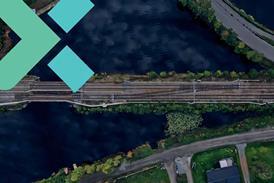Close menu
- Home
-
News
- Back to parent navigation item
- News
- Traction and rolling stock
- Passenger
- High speed
- Freight
- Infrastructure
- Policy
- Technology
- Ticketing
- Business
- Research, training and skills
- Accessibility and inclusion
- People
- Urban rail news
- Suburban and commuter rail
- Metro
- Light rail and tram
- Monorail and peoplemover
- Regions
- InnoTrans
- In depth
- Events
- Data
- Maps
- Tenders & Jobs
- Sponsored content
- Insights
French ERTMS strategy confirmed as Paris – Lyon roll-out progresses
By Railway Gazette International2024-11-13T14:16:00

FRANCE: The government has unveiled its plans for rolling out the European Rail Traffic Management System over the next two decades, as four-day blockade was undertaken to complete a key stage in the resignalling of LGV Sud Est between Paris and Lyon.
Already have an account? LOG IN
To continue…
You’ve reached your limit of content for the month














